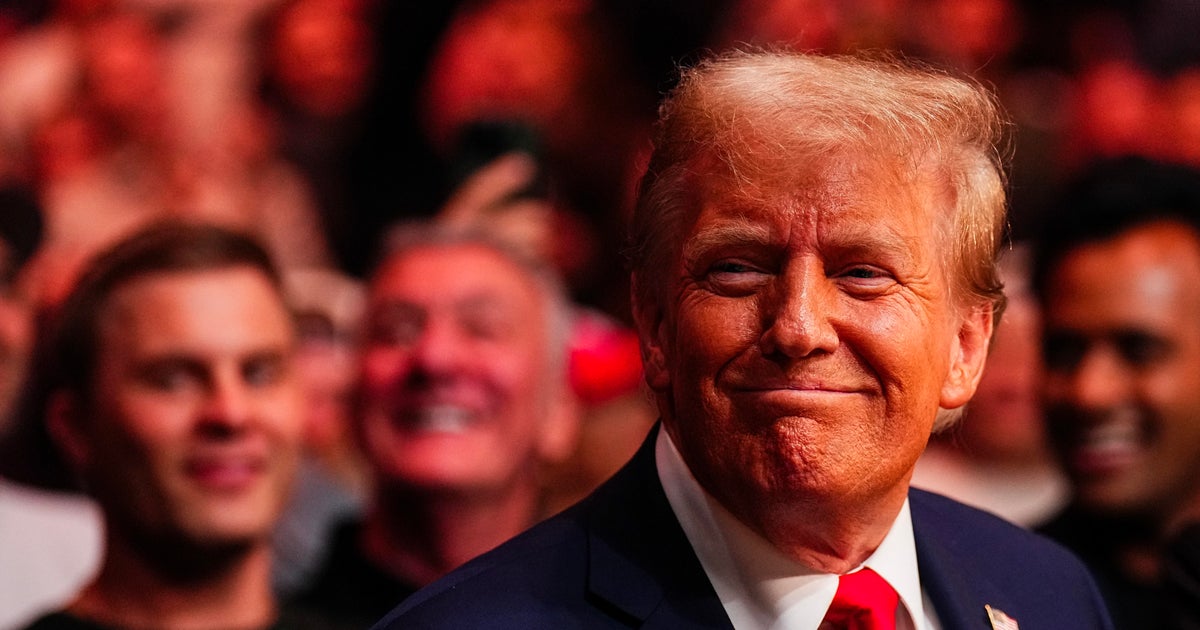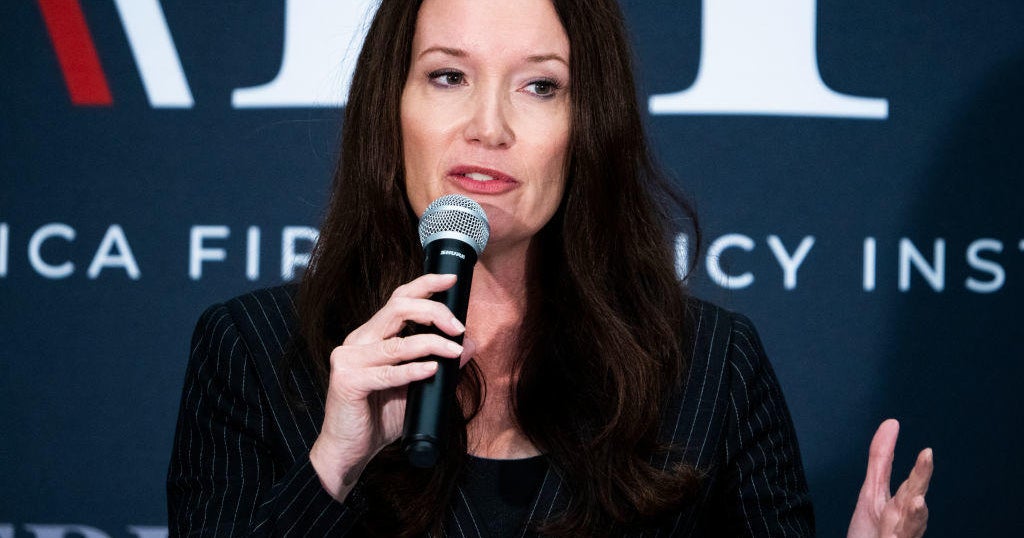CBS News
Secret Service admits some security modifications for Trump “were not provided” ahead of assassination attempt

The Secret Service admitted some security modifications for Trump “were not provided” ahead of the assassination attempt against him last Saturday.
On Sunday, the Secret Service acknowledged that in some instances when the Secret Service did not provide “specific specialized units or resources,” the agency made “modifications to ensure extra protection” of former President Donald Trump ahead of the assassination attempt last week, as calls for an investigation continue.
Secret Service spokesman Anthony Guglielmi said in a statement Sunday such modifications could include “utilizing state or local partners to provide specialized functions or otherwise identifying alternatives to reduce public exposure of a protectee.”
A person briefed on the matter confirmed to CBS News the Trump campaign has been asking for additional Secret Service resources since he left office in 2021.
The Secret Service’s decisions on Trump’s protection were first reported by The New York Times and The Washington Post.
Secret Service director Kimberly Cheatle is expected to testify Monday before the House Oversight Committee. On Sunday evening, Homeland Security Secretary Alejandro Mayorkas appointed a bipartisan panel to conduct a 45-day independent review of the Trump assassination attempt. He named former DHS Secretary Janet Napolitano, former homeland security adviser Frances Townsend, former Judge and Deputy Attorney General Mark Filip and former Delaware homeland security official David Mitchell to the panel.
A day after the shooting, Guglielmi called it “categorically false” that additional security for Trump had been requested and denied.
Mr. Trump was grazed by a bullet, a bystander was killed and two others were wounded in the shooting. Secret Service snipers shot and killed the suspect, later identified as 20-year-old Thomas Matthew Crooks.
The Secret Service bolstered the former president’s security footprint in June, adding a counter assault team personnel, drones and robotic dogs. An official familiar with the matter confirmed to CBS News that the enhancement of Trump’s Secret Service assets was connected to the Iranian threat stream.
A Trump source familiar with the planning and security of Trump political rallies, and who spoke on the condition of anonymity, confirmed that there had been concerns over the last two years about a lack of additional resources and support from the Secret Service.
The Trump campaign requested additional security measures for some events, including more metal detectors at a May rally in the Bronx, which caused long lines for thousands of attendees. The Trump campaign also requested metal detectors when the former president attended his son Barron’s high school graduation in May. But the Secret Service initially declined to provide them because it was not a political event. The agency ultimately added metal detectors and other security measures before Barron Trump’s graduation ceremony took place.
The Secret Service’s handling of the security at the Trump rally on July 13 has prompted questions, particularly after more information has emerged about the timeline of the shooting. Three sources familiar with a law enforcement briefing to members of Congress last week said that the Secret Service was notified by the Pennsylvania State Police of a suspicious person with a rangefinder on the grounds at 5:51 p.m. on Saturday — about 20 minutes before the gunman opened fire. At that time, local law enforcement did not know the suspicious person had a gun, according to a local law enforcement officer and the Butler County sheriff.
Cellphone video also shows rally attendees pointing toward the shooter, and trying to alert authorities to his presence — a full two minutes before he opened fire on the former president.
Law enforcement is still investigating a possible motive.
A growing number of Republicans have called for Secret Service Director Kimberly Cheatle’s resignation in the wake of the shooting.
At last week’s Republican National Convention, GOP Sens. Marsha Blackburn and John Barrasso posted video on social media appearing to show several members of Congress confronting Cheatle. In the video posted by Blackburn, which also shows Sen. James Lankford, Barrasso demands a “resignation or full explanation” from Cheatle. After fielding a number of questions as senators criticized her, Cheatle said in the video, “I don’t think that this is the place to have this discussion.”
House Intelligence Committee Chair Mike Turner, a Republican, told “Face the Nation” that Cheatle’s “failures are just absolutely outrageous and incredible.”
“If he had been killed, they would be culpable,” Turner said about the Secret Service. “Every aspect of their failure leads right to giving an opportunity to shoot Donald Trump. And that is going to be the major issue.”
According to Trump’s son, Eric Trump, the former president did not get stitches but has a “nice flesh wound.” Rep. Ronny Jackson, Trump’s former White House physician, said Saturday in a letter that he had treated Trump and said the former president is “doing well.”
“The bullet passed, coming less than a quarter of an inch from entering his head, and struck the top of his right ear,” Jackson said in the letter. “The bullet track produced a 2 cm wide wound that extended down the cartilaginous surface of the ear.”
Trump made his first public appearances since the shooting at last week’s Republican National Convention, and he held another rally on Saturday. He referenced the shooting several times, saying he “took a bullet for democracy.”
CBS News
Gazan chefs cook up hope and humanity for online audience

Renad Atallah is an unlikely internet sensation: a 10-year-old chef, with a repertoire of simple recipes, cooking in war-torn Gaza. She has nearly a million followers on Instagram, who’ve witnessed her delight as she unpacks parcels of food aid.
CBS News
We interviewed Renad via satellite, though we were just 50 miles away, in Tel Aviv. [Israel doesn’t allow outside journalists into Gaza, except on brief trips with the country’s military.]
“There are a lot of dishes I’d like to cook, but the ingredients aren’t available in the market,” Renad told us. “Milk used to be easy to buy, but now it’s become very expensive.”
I asked, “How does it feel when so many people like your internet videos?”
“All the comments were positive,” she said. “When I’m feeling tired or sad and I want something to cheer me up, I read the comments.”
We sent a local camera crew to Renad’s home as she made Ful, a traditional Middle Eastern bean stew. Her older sister Noorhan says they never expected the videos to go viral. “Amazing food,” Noorhan said, who added that her sibling made her “very surprised!”
After more than a year of war, the Gaza Strip lies in ruins. Nearly everyone has been displaced from their homes. The United Nations says close to two million people are experiencing critical levels of hunger.
Hamada Shaqoura is another chef showing the outside world how Gazans are getting by, relying on food from aid packages, and cooking with a single gas burner in a tent.
Shaqoura also volunteers with the charity Watermelon Relief, which makes sweet treats for Gaza’s children.
In his videos online, Shaqoura always appears very serious. Asked why, he replied, “The situation does not call for smiling. What you see on screen will never show you how hard life is here.”
Before dawn one recent morning in Israel, we watched the UN’s World Food Program load nearly two dozen trucks with flour, headed across the border. The problem is not a lack of food; the problem is getting the food into the Gaza Strip, and into the hands of those who desperately need it.
The UN has repeatedly accused Israel of obstructing aid deliveries to Gaza. Israel’s government denies that, and claims that Hamas is hijacking aid.
“For all the actors that are on the ground, let the humanitarians do their work,” said Antoine Renard, the World Food Program’s director in the Palestinian territories.
I asked, “Some people might see these two chefs and think, well, they’re cooking, they have food.”
“They have food, but they don’t have the right food; they’re trying to accommodate with anything that they can find,” Renard said.
Even in our darkest hour, food can bring comfort. But for many in Gaza, there’s only the anxiety of not knowing where they’ll find their next meal.
For more info:
Story produced by Mikaela Bufano. Editor: Carol Ross.
See also:
“Sunday Morning” 2024 “Food Issue” recipe index
Delicious menu suggestions from top chefs, cookbook authors, food writers, restaurateurs, and the editors of Food & Wine magazine.
CBS News
A study to devise nutritional guidance just for you

It’s been said the best meals come from the heart, not from a recipe book. But at this USDA kitchen, there’s no pinch of this, dash of that, no dollops or smidgens of anything. Here, nutritionists in white coats painstakingly measure every single ingredient, down to the tenth of a gram.
Sheryn Stover is expected to eat every crumb of her pizza; any tiny morsels she does miss go back to the kitchen, where they’re scrutinized like evidence of some dietary crime.
Stover (or participant #8180, as she’s known) is one of some 10,000 volunteers enrolled in a $170 million nutrition study run by the National Institutes of Health. “At 78, not many people get to do studies that are going to affect a great amount of people, and I thought this was a great opportunity to do that,” she said.
CBS News
It’s called the Nutrition for Precision Health Study. “When I tell people about the study, the reaction usually is, ‘Oh, that’s so cool, can I do it?'” said coordinator Holly Nicastro.
She explained just what “precise” precisely means: “Precision nutrition means tailoring nutrition or dietary guidance to the individual.”
The government has long offered guidelines to help us eat better. In the 1940s we had the “Basic 7.” In the ’50s, the “Basic 4.” We’ve had the “Food Wheel,” the “Food Pyramid,” and currently, “My Plate.”
CBS News
They’re all well-intentioned, except they’re all based on averages – what works best for most people, most of the time. But according to Nicastro, there is no one best way to eat. “We know from virtually every nutrition study ever conducted, we have inner individual variability,” she said. “That means we have some people that are going to respond, and some people that aren’t. There’s no one-size-fits-all.”
The study’s participants, like Stover, are all being drawn from another NIH study program called All Of Us, a massive undertaking to create a database of at least a million people who are volunteering everything from their electronic health records to their DNA. It was from that All of Us research that Stover discovered she has the gene that makes some foods taste bitter, which could explain why she ate more of one kind of food than another.
Professor Sai Das, who oversees the study at Tufts University, says the goal of precision nutrition is to drill down even deeper into those individual differences. “We’re moving away from just saying everybody go do this, to being able to say, ‘Okay, if you have X, Y and Z characteristics, then you’re more likely to respond to a diet, and somebody else that has A, B and C characteristics will be responding to the diet differently,'” Das said.
It’s a big commitment for Stover, who is one of 150 people being paid to live at a handful of test sites around the country for six weeks – two weeks at a time. It’s so precise she can’t even go for a walk without a dietary chaperone. “Well, you could stop and buy candy … God forbid, you can’t do that!” she laughed.
While she’s here, everything from her resting metabolic rate, her body fat percentage, her bone mineral content, even the microbes in her gut (digested by a machine that essentially is a smart toilet paper reading device) are being analyzed for how hers may differ from someone else’s.
Nicastro said, “We really think that what’s going on in your poop is going to tell us a lot of information about your health and how you respond to food.”
CBS News
Stover says she doesn’t mind, except for the odd sounds the machine makes. While she is a live-in participant, thousands of others are participating from their homes, where electronic wearables track all kinds of health data, including special glasses that record everything they eat, activated when someone starts chewing. Artificial intelligence can then be used to determine not only which foods the person is eating, but how many calories are consumed.
This study is expected to be wrapped up by 2027, and because of it, we may indeed know not only to eat more fruits and vegetables, but what combination of foods is really best for us. The question that even Holly Nicastro can’t answer is, will we listen? “You can lead a horse to water; you can’t make them drink,” she said. “We can tailor the interventions all day. But one hypothesis I have is that if the guidance is tailored to the individual, it’s going to make that individual more likely to follow it, because this is for me, this was designed for me.”
For more info:
Story produced by Mark Hudspeth. Editor: Ed Givnish.
“Sunday Morning” 2024 “Food Issue” recipe index
Delicious menu suggestions from top chefs, cookbook authors, food writers, restaurateurs, and the editors of Food & Wine magazine.
CBS News
A new generation of shopping cart, with GPS and AI

Watch CBS News
Be the first to know
Get browser notifications for breaking news, live events, and exclusive reporting.














